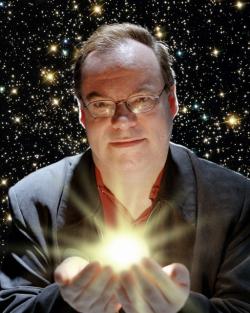Jul 11 2014
An International team of astronomers using data from two space telescopes - the Canadian Space Agency’s MOST satellite and the French CoRoT mission - announced that they are able to monitor the “heartbeats” of baby stars.
 Dr. Jaymie Matthews
Dr. Jaymie Matthews
This enables scientists to learn the internal structures and ages of young stars, and allows them to test the theories of how our own Sun came about 4.5 billion years ago. The results are published in Science Magazine.
“Think of it as ultrasound of stellar embryos,” said UBC Physics & Astronomy Professor Jaymie Matthews, MOST Mission Scientist and a co-author of the study. “Stars can vibrate due to sound waves bouncing inside. We detect the sound vibrations across the vacuum of space by the subtle changes in stellar brightness. Then we translate the frequencies of those vibrations into models of the structures of those stars’ hidden interiors.”
And, observing these young ones, such as the soon-to-be-stars in young clusters like NGC 2264, is just like watching our Sun during its “birth” - and we don’t even need a time machine.
Dr. Konstanze Zwintz, the lead author of the study from the KU Leuven Institute of Astronomy in Belgium, calls the technique of probing protostars with sound waves “echography”. She further explained that while both young and old stars look just like pinpoints of light, their vibrations can tell you if it’s an old star or a young one - “just like the pitch of a bell depends on its size, shape, and what it’s made of.”
In this new Science paper, scientists have taken a big step toward better understanding of the life stories of stars like the Sun. The team found a clear dependence: "When a forming star is closer to the initial stage of its formation (as in the first trimester of a human pregnancy), it pulsates slowly. When it gets closer to igniting thermonuclear fusion in its core to become a true star (like the moment of birth of a baby at the end of the third trimester), it pulsates ever faster. "
As mentioned, many of the stars in the Science study were observed by two space telescopes: MOST and CoRoT. MOST (Microvariability & Oscillations of STars) is a Canadian Space Agency (CSA) mission launched in 2003 to perform asteroseismology and study planets beyond the Solar System. The telescope was designed and largely built at UBC under the supervision of Professor Matthews. CoRoT (Convection, Rotation and Transits) was a European mission with similar goals.
How does the life story of our Sun affect us? “We should be grateful we live on a planet which orbits a boring middle-aged star,” points out Professor Matthews. “Much better than an exciting star doing exciting things like, say, exploding.”